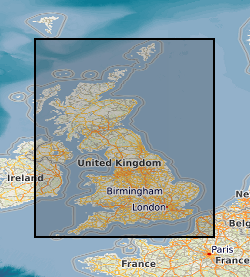Potassium
Type of resources
Available actions
Topics
Keywords
Contact for the resource
Provided by
Years
Formats
Update frequencies
-

This dataset contains VASP runs performed on several supercomputing services (Monsoon and ARCHER, and their successors Monsoon2 and ARCHER2) to calculate the chemical potentials of potassium in liquid iron mixtures and in liquid and solid silicate mixtures, and their distribution in the Earth’s core using density functional theory. Data are available for the chemical potentials of potassium and various other elements in iron and silicate liquid mixtures. These data were used to calculate chemical equilibrium between liquid iron alloys and Earth’s mantle materials. The present grant also supported work regarding the Si composition and thermal history of Earth’s liquid core. Results from VASP runs are also included in the uploaded dataset.
-

This dataset represents the first publication of complete national maps from the Geochemical Baseline Survey of the Environment (G-BASE) and TellusNI projects, whose aim was to conduct a national geochemical survey of the United Kingdom in order to improve understanding of our geology and environment and provide quantitative evidence against which to gauge future environmental change. This dataset consists of a series of interpolated raster (ASCII grid) maps displaying the concentrations of a suite of chemical elements (and oxides) in the stream sediments of the United Kingdom. The chemical elements are as follows: Arsenic, Barium, Calcium (CaO), Chromium, Cobalt, Copper, Iron (Fe2O3), Lanthanum, Lead, Magnesium (MgO), Manganese (MnO), Nickel, Potassium (K2O), Rubidium, Uranium, Vanadium, Zinc and Zirconium.
 NERC Data Catalogue Service
NERC Data Catalogue Service